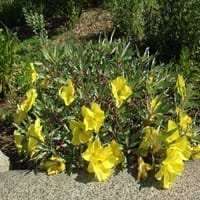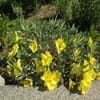Life Span
Perennial
Perennial
Type
Herbaceous Perennial, Perennial
Bulb or Corm or Tuber
Origin
United States, Central United States, South-Central United States, Texas
Hybrid origin
Types
Not available
Not Available
Habitat
Bluffs, limestone outcrops, Prairies, Rocky areas
tropical environments
USDA Hardiness Zone
5-8
8-11
AHS Heat Zone
8-3
Not Available
Sunset Zone
1a, 1b, 2a, 2b, 3a, 3b, 4, 5, 6, 7, 8, 9, 10, 11, 12, 13, 14, 15, 16, 17, 18, 19, 20, 21, 22, 23, 24
21,22
Habit
Spreading
Clump-Forming
Flower Color
Yellow, Lemon yellow, Gold
White, Red, Light Pink
Flower Color Modifier
Bicolor
Bicolor
Fruit Color
Light Green, Tan
Green, Brown
Leaf Color in Spring
Green
Green, Dark Green
Leaf Color in Summer
Green
Light Green
Leaf Color in Fall
Green
Several shades of Green
Leaf Color in Winter
Light Green
Light Green
Leaf Shape
Lance shaped
Long Linear
Plant Season
Spring, Summer
Spring, Summer, Winter
Sunlight
Full Sun, Partial Sun
Full Sun, Partial Sun
Type of Soil
Loam, Sand
Loam, Sand
The pH of Soil
Acidic, Neutral, Alkaline
Acidic, Neutral
Soil Drainage
Well drained
Well drained
Bloom Time
Late Spring, Early Summer, Summer, Late Summer
Not Available
Tolerances
Drought
Deer resistant
Where to Plant?
Ground, Pot
Container, Ground, Pot
How to Plant?
Divison, Seedlings
Divison, From Rhizomes, Tubers
Plant Maintenance
Medium
Low
Watering Requirements
Average Water Needs, Do Not over Water, Requires regular watering
Average Water Needs
In Summer
Lots of watering
Lots of watering
In Spring
Moderate
Moderate
In Winter
Average Water
Average Water
Soil pH
Acidic, Neutral, Alkaline
Acidic, Neutral
Soil Type
Loam, Sand
Loam, Sand
Soil Drainage Capacity
Well drained
Well drained
Sun Exposure
Full Sun, Partial Sun
Full Sun, Partial Sun
Pruning
Remove damaged leaves, Remove dead branches, Remove dead leaves
Cut or pinch the stems, Remove damaged leaves, Remove dead branches, Remove dead leaves
Fertilizers
All-Purpose Liquid Fertilizer
as it is a flowering plant, use high phosphorous content fertilizer, Nitrogen, Phosphorous, Potassium, Requires high amount of nitrogen
Pests and Diseases
Leaf spot, Root rot
Aphids, Grasshoppers, Mealybugs, Mites, Red blotch, Slugs, Snails
Plant Tolerance
Drought
Deer resistant
Flower Petal Number
Single
Not Available
Edible Fruit
No
Not Available
Fragrant Flower
Yes
Not Available
Foliage Texture
Medium
Medium
Foliage Sheen
Matte
Glossy
Attracts
Bugs, Butterflies, Flies, Flying insects, Insects
Bees, Butterflies, Hummingbirds
Allergy
Not Available
poisonous if ingested
Aesthetic Uses
Beautification, Decorating walls, Hanging Basket, Showy Purposes, Used as an interior landscaping species, Used for decorating walls, fences, gates, hedges, etc.
Beautification, Bouquets, Cottage Garden, Showy Purposes
Beauty Benefits
Glowing Skin, Improve skin condition, Making cosmetics, used as a dye
Not Available
Environmental Uses
Air purification
Not Available
Medicinal Uses
Arthritis, cholesterol-lowering, Diarrhea, Eczema, Inflammation, lowering blood pressure
Not Available
Part of Plant Used
Whole plant
Flowers
Other Uses
Making Perfumes, Used as Ornamental plant, Used for bedding in gardens
Used as Ornamental plant, Used for bedding in gardens
Used As Indoor Plant
Yes
Yes
Used As Outdoor Plant
Yes
Yes
Garden Design
Mixed Border, Rock Garden, Wall, Wildflower
Container, Cutflower, Houseplant, Mixed Border, Tropical
Botanical Name
OENOTHERA macrocarpa
HIPPEASTRUM 'Picotee'
Common Name
Bigfruit evening Primrose,Ozark sundrop,Missouri evening primrose
Florist Amaryllis, Hippeastrum, Picotee Hippeastrum
In Hindi
Missouri primrose
HIPPEASTRUM
In German
Missouri Primel
HIPPEASTRUM
In French
Oenothera macrocarpa
HIPPEASTRUM
In Spanish
prímula Missouri
Hippeastrum
In Greek
Missouri primrose
Hippeastrum
In Portuguese
Missouri Primrose
HIPPEASTRUM
In Polish
Wiesiołek ozdobny
Hippeastrum
In Latin
Primrose Missouri
Hippeastrum
Phylum
Tracheophyta
Magnoliophyta
Class
Magnoliopsida
Magnoliopsida
Order
Myrtales
Asparagales
Family
Onagraceae
Amaryllidaceae
Genus
Oenothera
Amaryllis
Clade
Angiosperms, Eudicots, Rosids
Angiosperms, Monocots
Tribe
Onagreae
Not Available
Subfamily
Onagroideae
Amaryllidoideae
Season and Care of Missouri Primrose and Hippeastrum
Season and care of Missouri Primrose and Hippeastrum is important to know. While considering everything about Missouri Primrose and Hippeastrum Care, growing season is an essential factor. Missouri Primrose season is Spring and Summer and Hippeastrum season is Spring and Summer. The type of soil for Missouri Primrose is Loam, Sand and for Hippeastrum is Loam, Sand while the PH of soil for Missouri Primrose is Acidic, Neutral, Alkaline and for Hippeastrum is Acidic, Neutral.
Missouri Primrose and Hippeastrum Physical Information
Missouri Primrose and Hippeastrum physical information is very important for comparison. Missouri Primrose height is 15.20 cm and width 35.60 cm whereas Hippeastrum height is 38.10 cm and width 30.10 cm. The color specification of Missouri Primrose and Hippeastrum are as follows:
Missouri Primrose flower color: Yellow, Lemon yellow and Gold
Missouri Primrose leaf color: Green
Hippeastrum flower color: White, Red and Light Pink
- Hippeastrum leaf color: Green and Dark Green
Care of Missouri Primrose and Hippeastrum
Care of Missouri Primrose and Hippeastrum include pruning, fertilizers, watering etc. Missouri Primrose pruning is done Remove damaged leaves, Remove dead branches and Remove dead leaves and Hippeastrum pruning is done Cut or pinch the stems, Remove damaged leaves, Remove dead branches and Remove dead leaves. In summer Missouri Primrose needs Lots of watering and in winter, it needs Average Water. Whereas, in summer Hippeastrum needs Lots of watering and in winter, it needs Average Water.





